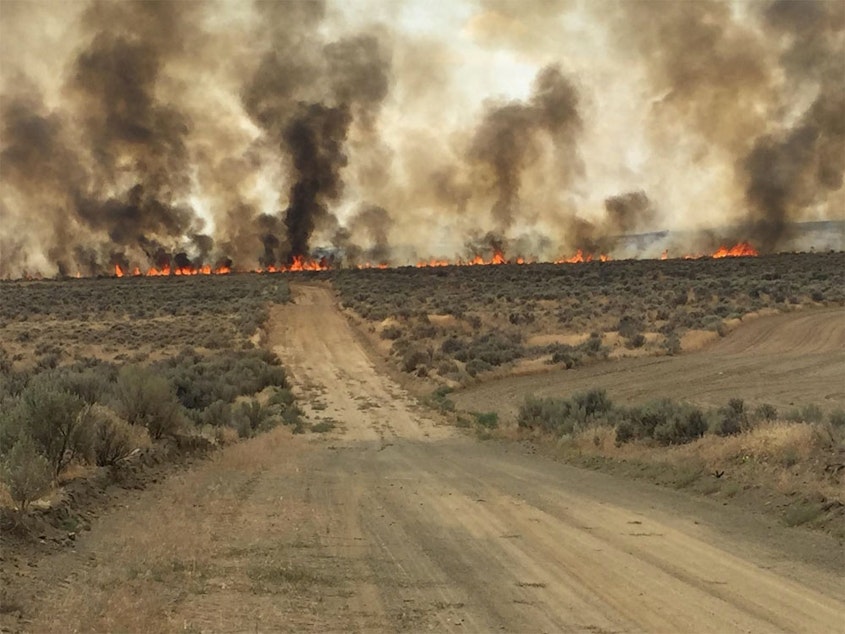As Wildfire Seasons Worsen, Scientists Point To Summer Precipitation As Major Diving Factor

Wildfire activity in the American West is likely to get worse in coming years. A new study out in the Proceedings of the National Academy of Sciences points to the lack of precipitation in the summer as the major driving factor when it comes to increasing fire severity.
For decades, scientists believed a combination of warm temperatures, declines in winter snowpack and dry conditions in summer made for severe wildfire. All three of those things do contribute to the fire season, but now researchers believe it’s summer moisture that drives fire activity most.
“We’re losing moisture when we need it the most: in the summertime. And that really does have consequences for things like agriculture (and) forest productivity,” Zack Holden said.
He works for the U.S. Forest Service in Missoula, Montana.
Holden and colleagues compared nearly 40 years of satellite maps of burned areas in the West with summer precipitation data between May and September for years 1979 to 2016. They found that precipitation declined by up to a third, and in some cases 45 percent.
“We know that snowpack is affected by warming temperatures, and we’ve seen snowpack declines, and that’s really well documented and that does genuinely impact our fire seasons, Holden said. “It makes fire seasons a little bit longer and it contributes to soil moisture deficits later in the season.”
“At the same time, we know that temperatures across the globe are increasing. That clearly has an effect on the rate at which fuels dry out. That really does impact wildfires,” he said.
“But at the same time, we are seeing these really dramatic changes in summer precipitations,” Holden said, pointing out current trends. For example, Missoula, Montana’s second largest city, hasn’t seen a major rain event for close to 50 days.
“We’re sitting on a record of rain-free days. And that’s true of a lot of the Northwest right now,” Holden said.
Last year, Spokane went 80 days without rain in the summer. According to the U.S. Drought monitor, the entire state of Washington is abnormally dry, with some parts experiencing drought this year.
In Oregon, the majority of the state is currently experiencing some level of drought. Oregon Governor Kate Brown has declared emergencies due to drought conditions in multiple counties. In Pendleton, measurable rain hasn’t fallen since June 21.
“I hate to say it, but for me, this study really seems like a bit of bad news for fire management,” Holden said.
That’s because, in the last decade, predictions about summer fire season have been made based on winter snowpack.
“In the past when we’ve had a really great snow year, and there’s a lot of snow high up in the mountains, some folks have said ‘hey, we’re going to have a pretty mild fire season,’” he said.
He points to just last year as an example, where there was a near-record snowpack, “but found ourselves, toward the end of the summer in one of the worst fire seasons that we’ve ever seen,” he said.
The 2016 - 2017 winter was the second snowiest in close to 30 years for cities like Salem, Ore., and Seattle, Wash. Wildfires the following summer dropped ash on Seattle and Portland.
Holden said the study, which was funded with help from NASA, shows predicting wildfire seasons depends less on what happens in the winter, and more on what the summer could bring.
“You know, it’s really hard to forecast summer moisture,” Holden said.
In the future, fires are expected to continue to get more severe, and forecasting them might become more difficult. [Copyright 2018 Northwest News Network]
